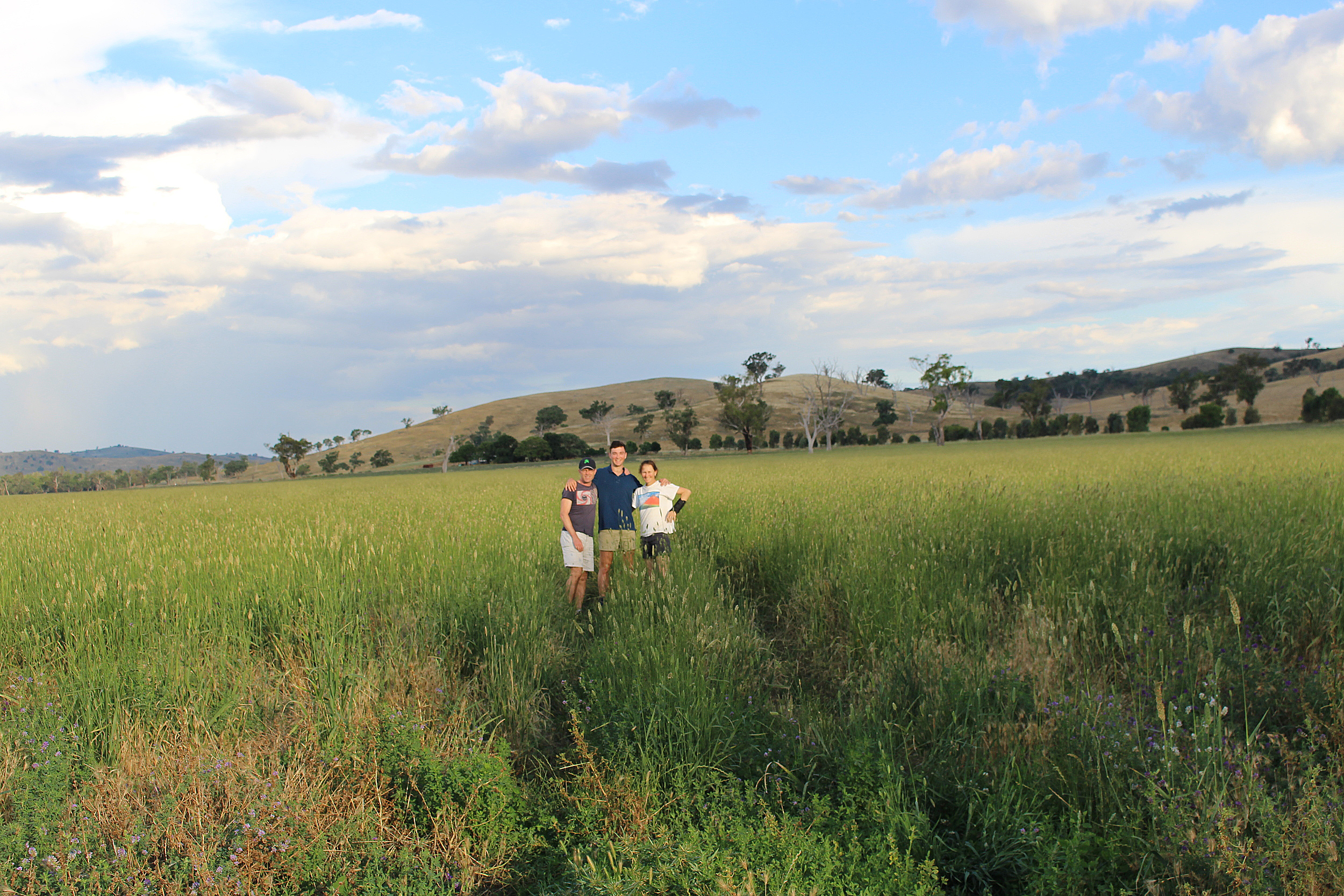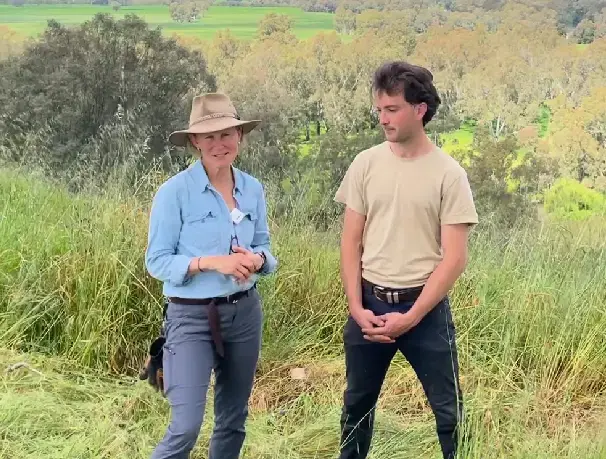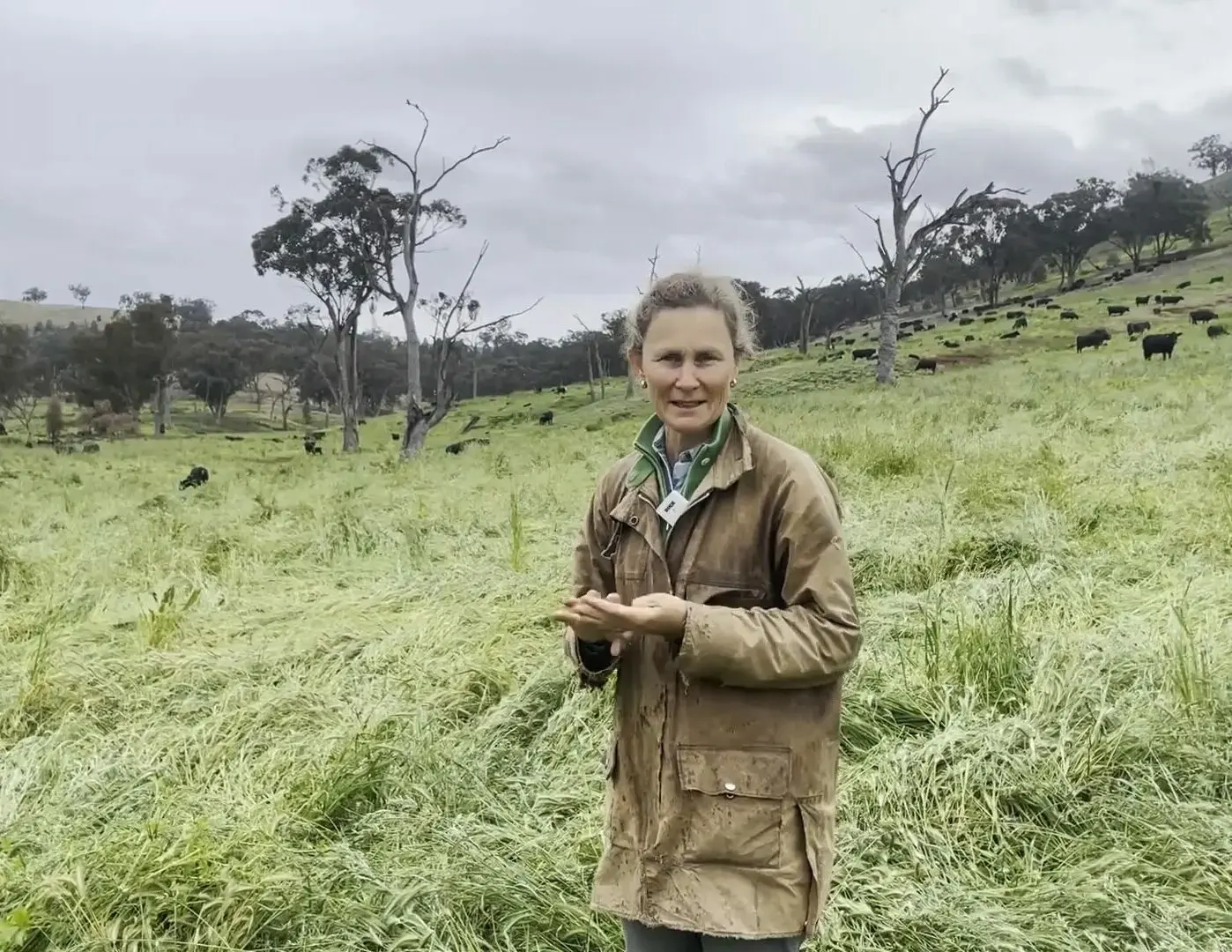‘Yabtree West‘
AN 8 FAMILIES GROUP FOCUS PRODUCER CASE STUDY
Working as a journalist in Sydney, Rebecca Gorman became increasingly concerned about climate change and other big issues facing our society. Wanting to do something concrete to help, and remembering her rural childhood, Rebecca decided to return to the land. Rebecca and her partner John Sevior purchased ‘Yabtree West’, a property in Mundarlo, NSW, near where she grew up. With the support of the 8 families group, Rebecca studied Holistic Management and introduced and experimented with various methods of ecological improvement including Natural Sequence Farming. With manager Dean Hann, they have increased vegetation cover, are halting erosion and survived drought conditions in 2018 through a healthy functioning ecosystem. This case study shares the transformation experience of Rebecca Gorman and her family on Yabtree West.
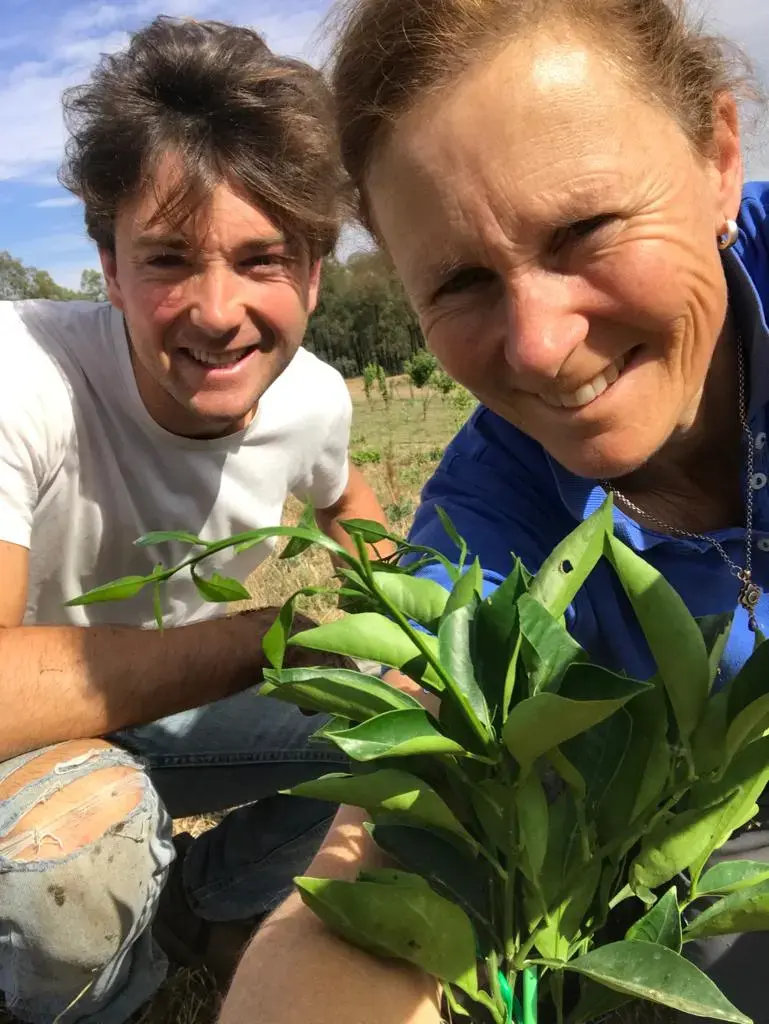
Farm Facts
Enterprise Type
Location
Property Size
Annual Rainfall
Agro-climatic region
Elevation
Soils
Social Structure
*Learn more about soil classifications at Soil Science Australia
Highlights
Motivation for change
-
The desire to do something practical to address climate change
-
Re-connect her family with their farming heritage and offer a place of sanctuary and connection to nature to friends, family and community
-
The need to find decision-making support, frameworks and guidance
Practices and innovations
-
Undertook ‘whole of farm’ planning through Holistic Management
-
Introducing Natural Sequence Farming to slow the flow of water
-
Uses time-controlled rotational grazing and water contours across the property
-
Applies Holistic Management decision-making to landscape, enterprise and lifestyle planning
-
Uses ‘Land to Market’ Ecological Outcomes Verification™ (EOV) monitoring to know if actions are leading to ecological improvement.
-
Joined the 8 families peer support group to connect with other landholders taking a similar approach
Outcomes
-
Consistently high levels of vegetation cover
-
Observed reduction of active erosion due to an increase of stabilising ground cover
-
A demonstrated ecological recovery after the 2018 drought
-
High levels of accountability and access to a “brains trust”, through participation in the 8 families
-
Preparation of the next generation for succession, through holistic decision-making, especially the use of the Holistic Management ‘testing questions’ framework
-
A strong level of confidence to make and adjust decisions and cope with difficult conditions on the farm
-
High satisfaction with life as a whole
The Yabtree West story
Returning to the land
As a journalist, Rebecca became increasingly concerned about climate change and other big issues facing society. During regular catch ups with Martin Royds, an old family friend and another Soils for Life case study farmer, Rebecca realised that there were approaches to farming that did not rely on big machinery and chemical use and even had the potential to help mitigate climate change. Growing up on a farm near Yerong Creek, NSW, Rebecca had often dreamed of returning to the land and realised that, with her children growing up fast, it was a case of ‘now or never’.
Rebecca searched for a property near Sydney without success. Taking one of the family’s regular visits to Rebecca’s old farm, then operating as a farm stay, she realised that the whole area felt like home, and that she needed to return to the land she grew up on. Within weeks they discovered Yabtree West.
According to Rebecca, Yabtree West had been ‘really well run by conventional standards, but historically it had been worked pretty hard’ as a sheep and cattle enterprise, especially in the hill country where after long years of set stocking there was significant gully erosion.
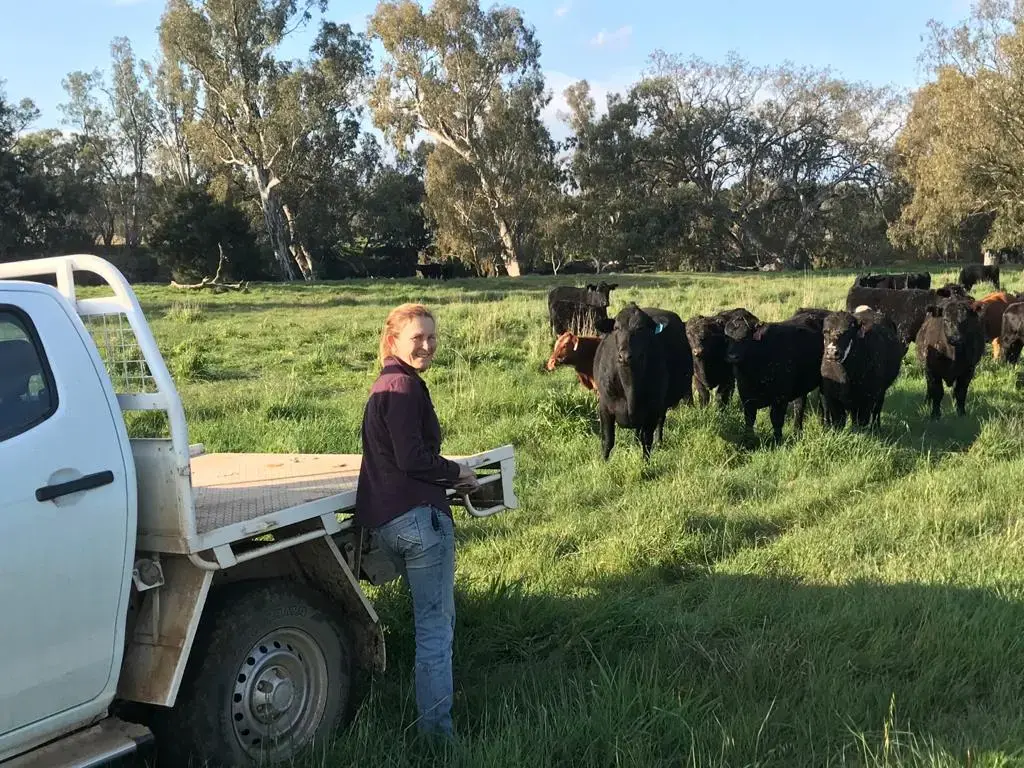
Educating herself
Rebecca was well-aware that, although she grew up on a farm, she had never carried responsibility for the land. She had to ‘play a lot of catch up’ on how to manage an enterprise. She continued to employ the existing farm manager of 17 years, Dean Hann who, with his considerable experience, shared her interest in seeking alternative farming approaches. She read widely and they both took Holistic Management (HM) and Natural Sequence Farming (NSF) training courses.
Making holistic decisions
Rebecca discovered that the key part of Holistic Management is writing out a ‘Holistic Context’ which outlined her existing social, economic and environmental situation as well as her hopes for the future. Every decision she made could be tested against that context – using a set of 7 testing questions.
Before long, Rebecca discovered that two of her neighbours were also managing holistically and belonged to a Holistic Management focused peer support group called the ‘8 families’. Rebecca was ‘keen to connect’ as she had so many questions, especially on understanding the how the soils and grasses responded to varying lengths of grazing and recovery. She believes it’s her great fortune to have been welcomed into the group and mentored so generously.
Designing the system
Rebecca and Dean worked together, using ‘whole of farm’ planning techniques to overlay new design ideas onto the existing property maps. Between their training and a visit from Natural Sequence Farming founder Peter Andrews and friend Martin Royds, Rebecca and Dean began experimenting with contours, intended to slow the passage of water through the landscape.
As part of the shared Holistic Context for the farm, it was agreed that the enterprise and farm infrastructure should be ‘smooth running, simple and easy to use.’ Semi-permanent electric fencing was built for subdivisions with temporary electric tape used within those smaller paddocks. A solar pump and irrigation specialist installed a solar pumping system to one of the hills, which then gravity fed through pipes to troughs in the new subdivisions. They began planning their grazing – matching how much grass was ahead with how many animals they could feed. All the animals were joined in one large mob to achieve both better grazing density and allow for longer recovery time between grazes. This process, known as time-controlled rotational grazing, has continued with Rebecca noting that although it sounds simple, there is a lot of observation, reflection and questioning to get it right and it can unfortunately never be a set and forget system.
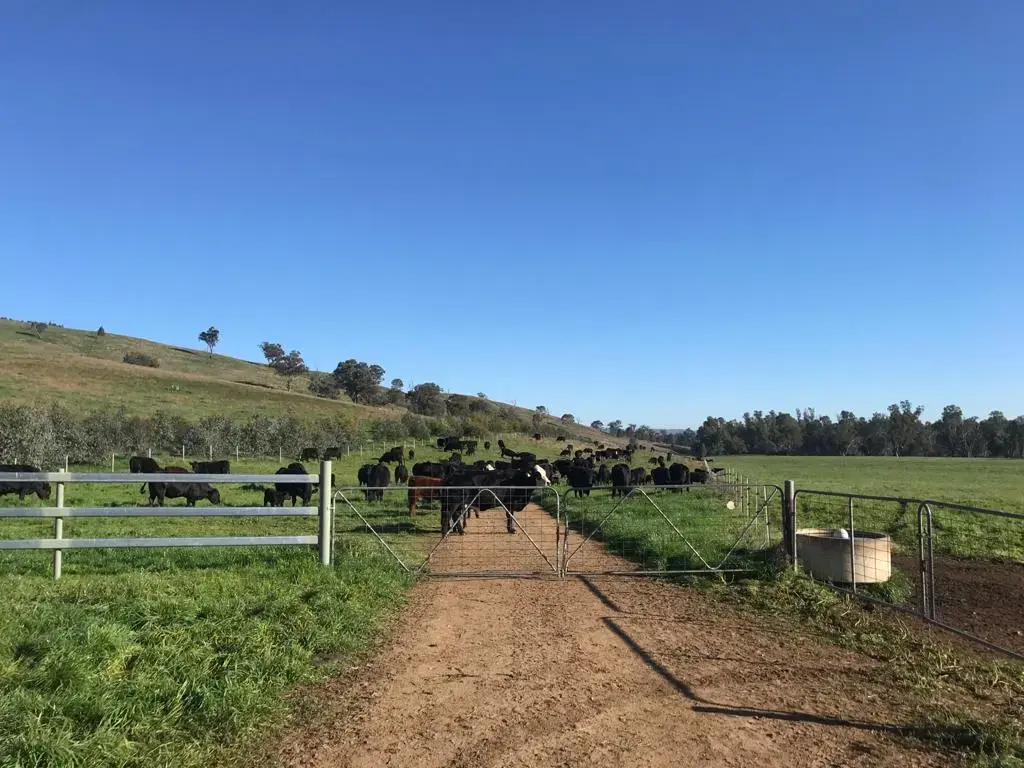
Reading the landscape
Over time, in relation to many things, Rebecca has relaxed from the early impatience and excitement of new knowledge. For example the initial attempt at slowing the water resulted in a structure more like a dam than the intended ‘leaky weir’. Local grader drivers Tony and James Mooney both underwent Natural Sequence Farming training and between them all they are now building ever more subtle structures to reach the same water-slowing outcomes. As well, it became clear just how important plant cover and a good litter layer was for helping water infiltrate into the soil rather than running off it. As Holistic Management consultant, Mark Gardener had said in the very first training Rebecca attended, ‘get your ground cover right through your grazing and so many problems disappear’. Now when the rains come through, the water moves out around the hillsides rather than rushing down the gullies. Rebecca reflects that she “imagined clear water trickling through the landscape – and amazingly we now see that occurring’.
Too hard and too soon
Letting go of things that don’t work
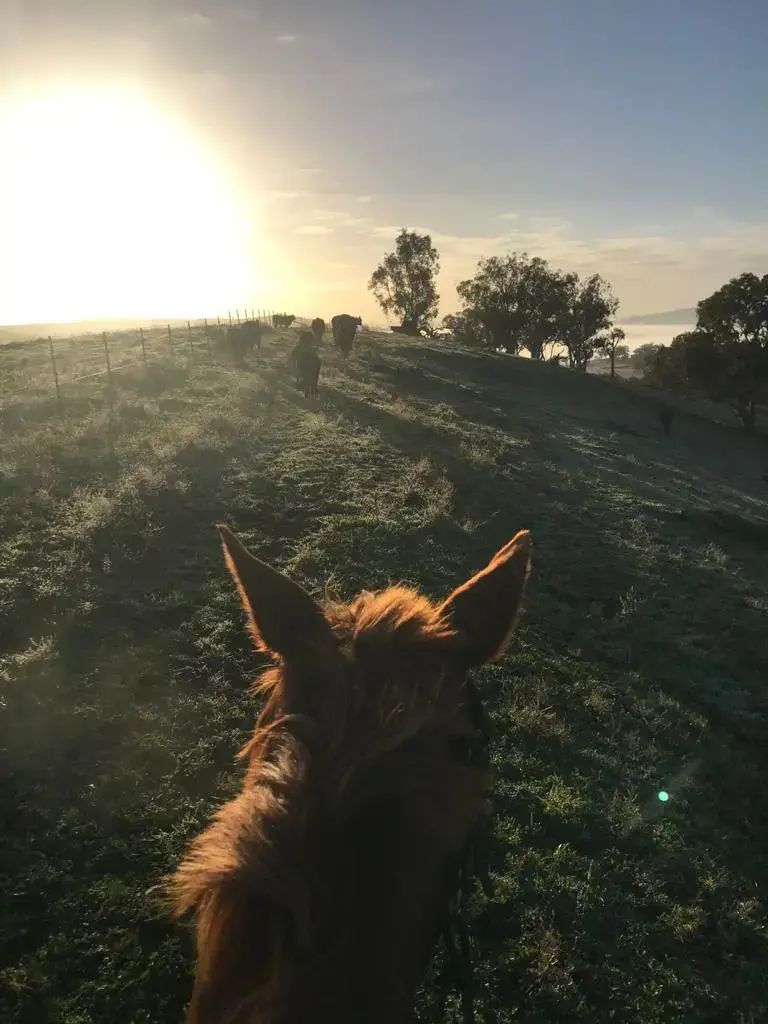
Staying on track
Over time, Rebecca found that she needed a level of accountability and feedback to keep her motivated and to inform her ongoing decision-making. The 8 families group kept her on track with frank reminders not to get distracted. The group also acted as a ‘brains trust’ of like-minded people with whom to work through decisions.
In 2018, Rebecca also became a member of ‘Land to Market Australia’. Land to Market began conducting Ecological Outcome Verification™ (EOV) monitoring to assess landscape function (via native perennials, water infiltration, groundcover percentage etc) at paddock sites across the property each year. This monitoring helped her to prioritise management adjustments and allowed her to feel confident navigating challenges such as the 2018 drought.
Constant evolution
Investing in the future
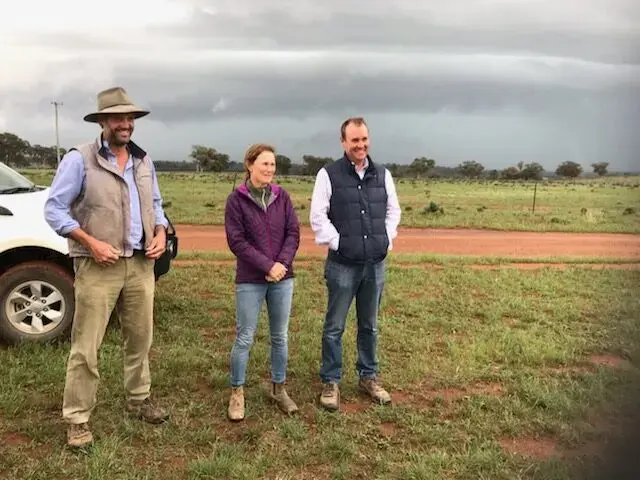
Outcomes1 The outcomes described in this section are based on best available data from remote monitoring or monitoring undertaken by the producer. Economic outcomes are based on financial data provided by the producer, while social outcomes are based on a wellbeing survey. More detail will be provided in the full reports, to be published in early 2022
Delve deeper into the 8 families’ soil and landscape regeneration practices,
and the results for landscape function, production, economics and well-being.
ECOLOGICAL
Ecological
The primary indicator of ecological function for Yabtree West comes from ‘Land to Market’ Ecological Outcome Verification™ monitoring. Landscape function data was first collected in 2018 (year 0) and has continued annually with additional sites added in 2019 (year 1) and 2020 (year 2). All landscape functions – water cycle, mineral cycle, energy flow, and community dynamics – increased from 2019 to 2020 (Fig. 2a). Over the three years, most landscape functions have increased overall (Fig. 2a).
Ecosystem function is also assessed through an Ecological Health Index (EHI) which ranges from <0 (Low) to >60 (Very High). Comparing four paddocks, the EHI index has increased from -15 (Low) in 2018 to +36 (High) in 2020 (Fig. 2b). Subsequently, this increase of EHI in 2020 also corresponds with increased rainfall experienced in the same year. In 2018 and 2019, Yabtree West was affected by a severe drought, and this is reflected in the low landscape function indices in year 1 (2019). The monitoring in year 2 (2020) showed a recovery of landscape function post-drought.
Yabtree West sits on the edge of a mountain range and features Dry Sclerophyll Forest in the higher paddocks. The naturally high tree numbers mean that when assessing vegetation levels, tree canopy cover and groundcover need to be assessed as ‘fractional cover2Fractional cover quantifies coverage from the sky, classifying any coverage by the uppermost layer. By contrast, Ground Cover evaluates cover at or near ground level. In other words, bare soil under green tree canopy is ignored in Fractional Cover data because it is overhung by the green cover of the canopy.’. Before making practice-changes Yabtree West’s fractional cover, according to VegeMachine satellite imagery, showed periods both below and above the surrounding 5km buffer. Since making practice changes in 2014, Yabtree West’s fractional cover has consistently remained higher than that of the surrounding area, suggesting higher levels of overall vegetation.
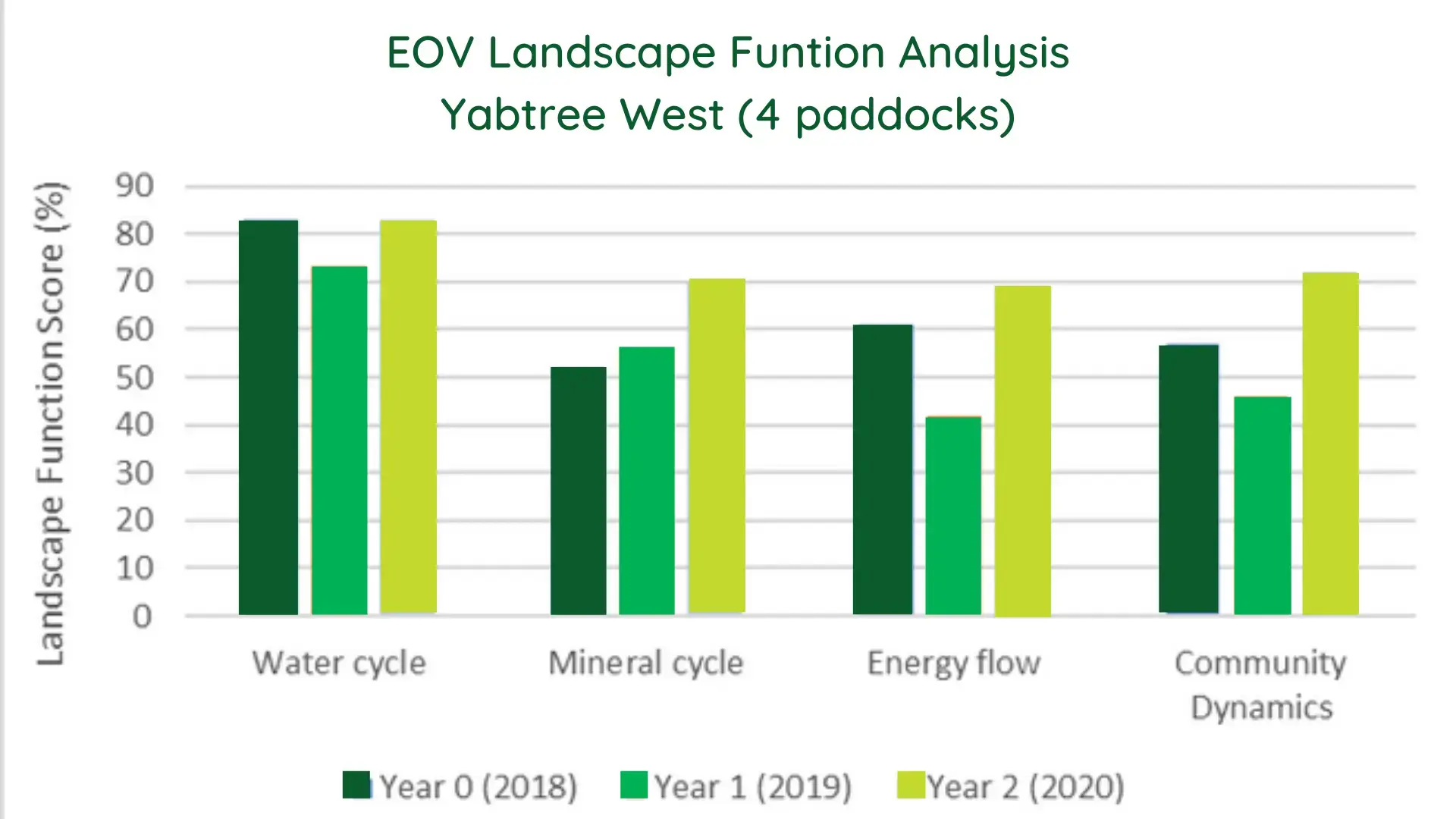
Figure 2a: Indices of ecosystem function.
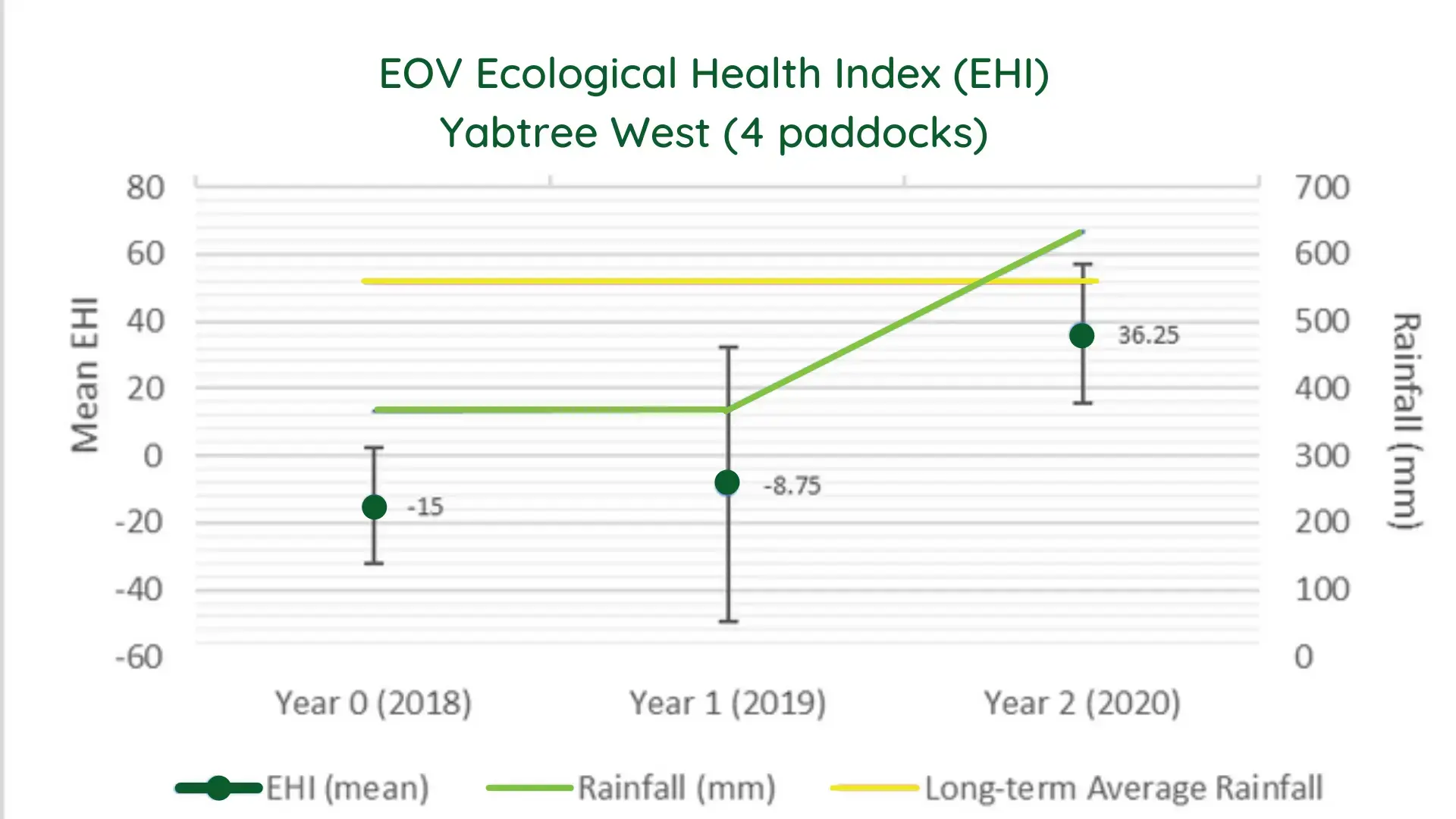
Figure 2b: Ecological Health Index for Yabtree West. Mean taken across four paddocks on Yabtree West between 2018 (year 0) to 2020 (year 2). Results obtained from Ecological Outcome Verification™ (EOV) provided by Rebecca Gorman. Rainfall data taken from BOM (Wantabadgery station 73044).
SOIL
Soil
Soils at Yabtree West were prone to erosion under past management. To mitigate this, a combination of rotational time-controlled grazing and water contours were applied to slow the flow of water across the land, as well as increase and maintain ground cover.
As a result of these practice changes, plants have re-colonized eroded gullies (Fig. 4a) and erosion across the property has reduced. The progression of large headwall or headward erosion (erosion which moves back up the landscape in the opposite direction to water flow) is gradually ceasing. (Fig. 4b).
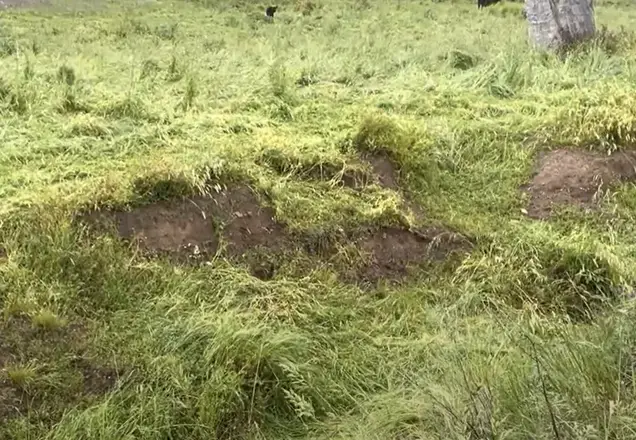
Figure 4a: Recolonisation of previously eroded gullies.
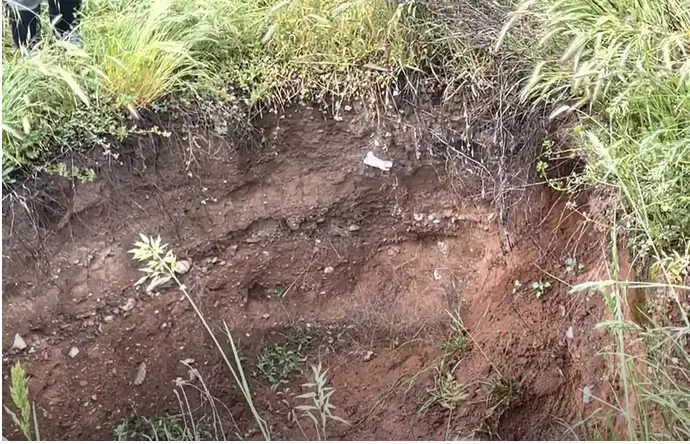
Figure 4b: Halting of headward erosion.
SOCIAL
Social
A survey designed to estimate wellbeing, through life satisfaction, indicated that Rebecca’s satisfaction of her life’s achievements increased by 20% during the first stage of changes (phase 2) and remained steady throughout the rest of the period (Fig. 6). Similarly, her satisfaction with life as a whole increased in the first stage of changes and plateaued during the second stage of changes, but has now increased to ‘extremely satisfied’ (scoring a 10 out of a potential 10 points) (Fig. 5).
By noting her agreement with various statements on a scale of 1-7 (with 7 being strongly agree), Rebecca also retrospectively estimated her relationship to farming for each phase of the transformation period (with phase 1 being ‘before changes were made’, and phase 4 being ‘now’ (Fig. 7). Her responses indicated that Rebecca’s relationship with farming has improved steadily and continually since beginning to implement holistic decision-making, rotational time controlled grazing and natural sequence farming on Yabtree West (phase 2).
Her perceived ability to cope with most difficult conditions on the farm increased through the first and second stage of practices changes (phases 2 and 3) before plateauing currently (phase 4). Rebecca’s perceived abilities to achieve the things she wants on farm, and to make the right decisions about farm management, increased steadily until they also reach a maximum level during the current period (phase 4). Significantly, her optimism about her family’s farming future reached a maximum level by the second stage of changes (phase 3).
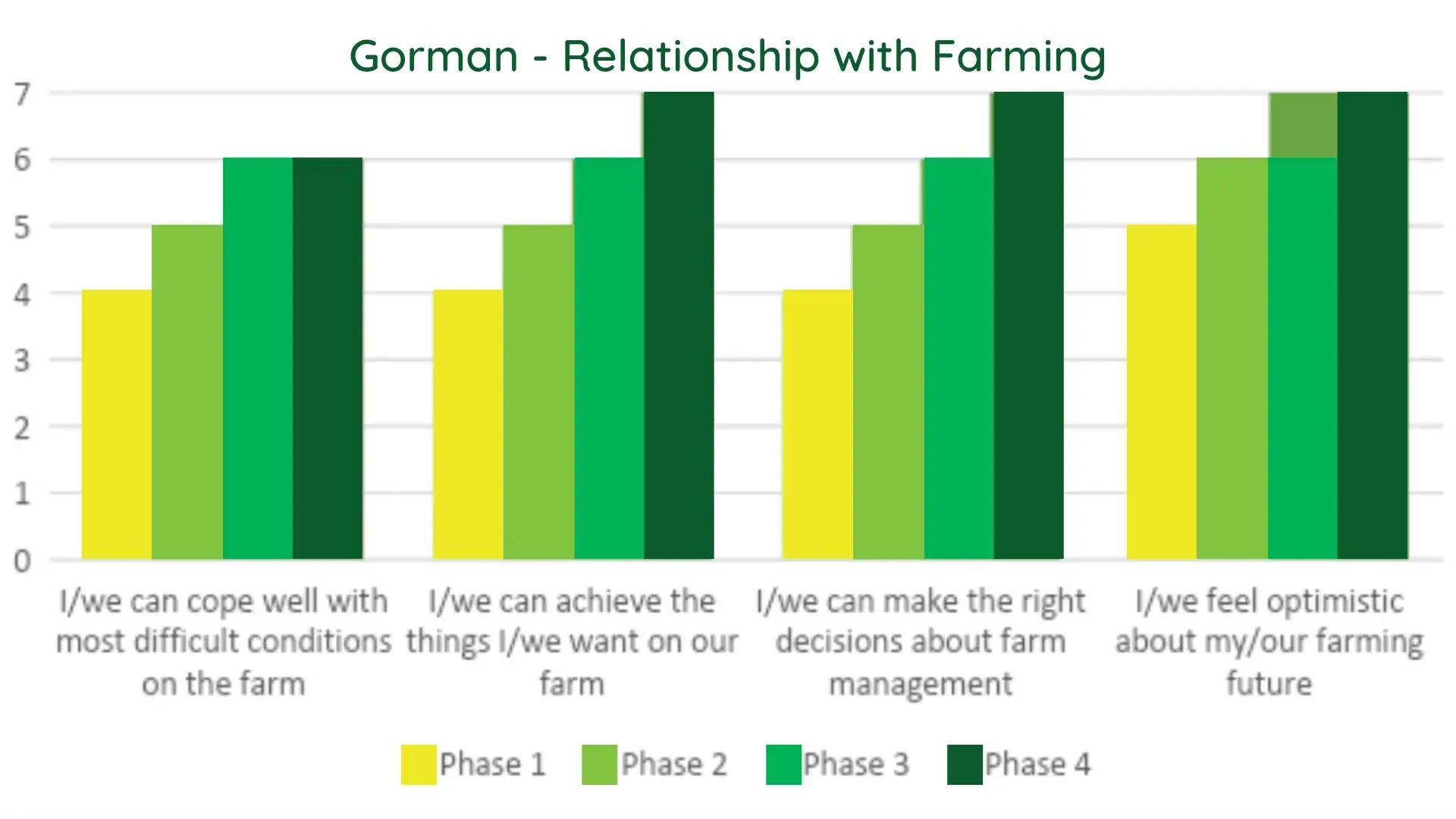
Figure 7: Rebecca’s perceived relationship to farming. Questions were inspired by the Regional Wellbeing Survey (Shirmer, 2021).
This project is supported by the Department of Water, Agriculture and the Environment, through funding from the Australian Government’s National Landcare Program.




